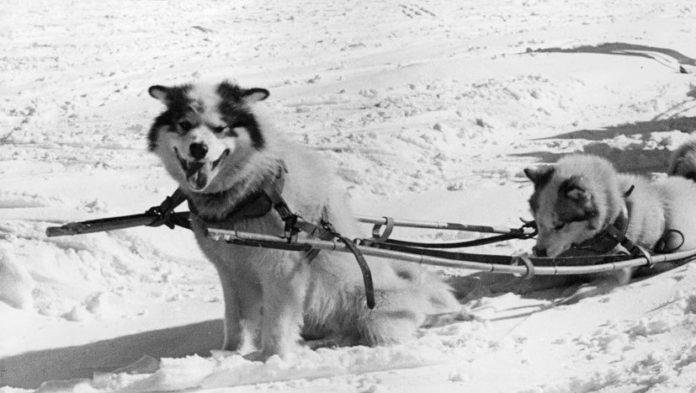In the unforgiving Arctic, dogs are an invaluable resource needed to survive and thrive, but not just any breed will do. New evidence demonstrates that when the Inuit people migrated from Siberia to North America around 2,000 years ago, a unique group of dogs came with them for the purposes of hunting and hauling.
“Dogs have lived in North America for as long as humans,” says Carly Ameen from the University of Exeter to Phys.org. “But we show here that the Inuit brought new dogs to the region which were genetically distinct and physically different from earlier dogs.”
Specialized dogs better equipped to handle harsh terrain
As part of their analysis, researchers sourced materials from museums in Denmark, Greenland, and Canada including clothing items made out of dog skin. They also analyzed the shapes of elements from 391 ancient dog remains and found that this special breed possessed a proportionally narrower cranium (braincase) and larger mandible (jaw).
These features made them ideal for transportation and traction — a major advantage for the migrating Inuit groups. This could explain why this particular breed was brought along during the migration instead of adopting local dogs on the way.
From ancient times to the present, the Inuit have remained a highly mobile Arctic group capable of travelling great distances thanks to the help of dog sleds and watercraft. They hunt sea mammals using these boats and the dogs help to drag the heavy carcasses back. The dogs are also useful for rapidly moving people from summer to winter camps as the seasons change.
“These dogs were incredibly specialized,” said co-author Tatiana Feuerborn to Discover Magazine. “They were adapted to the lifestyle and able to endure hardships in a way that most other dogs aren’t.”
Genetic traces link the breed all the way back to Siberia
In another part of the study, the researchers analyzed the genome of 922 Arctic dogs and wolves that lived in the region over the last 4,500 years. Their results showed that dogs from Inuit sites dated to around 2,000 years ago were genetically distinct from more ancient dogs in the Americas like malamutes and huskies, but were almost identical to older Siberian dogs.
There is evidence that this special breed had a presence in North America prior to the arrival of the Inuit, but after they came, the numbers exploded.
This genetic lineage lives on via modern Arctic sled dogs in Inuit communities, who are some of the last direct descendants. They represent some of the last remaining populations of indigenous, pre-European dog lineages throughout the Americas.
“Archaeological evidence has shown us that before the Inuit arrived in North America, dog sledding was a rarity,” says Feuerborn.
“Our analysis of the DNA suggests dogs brought by the Inuit were distinct from the earlier dogs of the North American Arctic to fill a specialist role in helping communities thrive in this hostile environment by aiding with transportation and hunting. The genetic legacy of these Inuit dogs can still be seen today in Arctic sled dogs.”





































